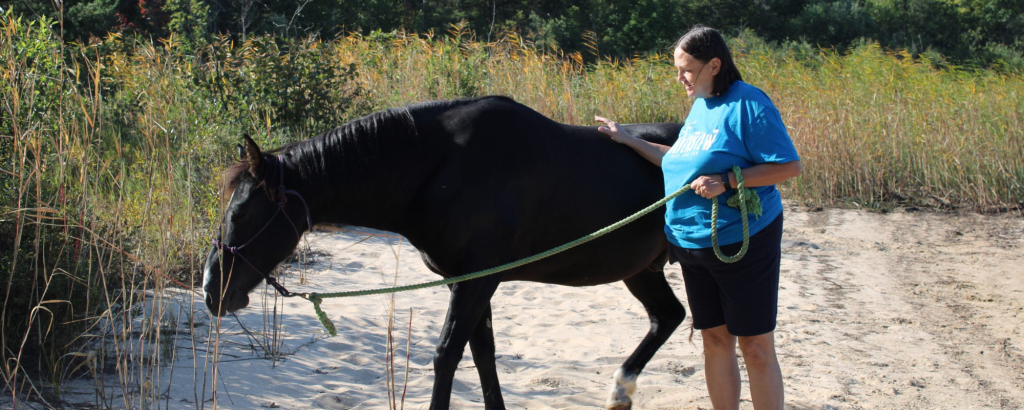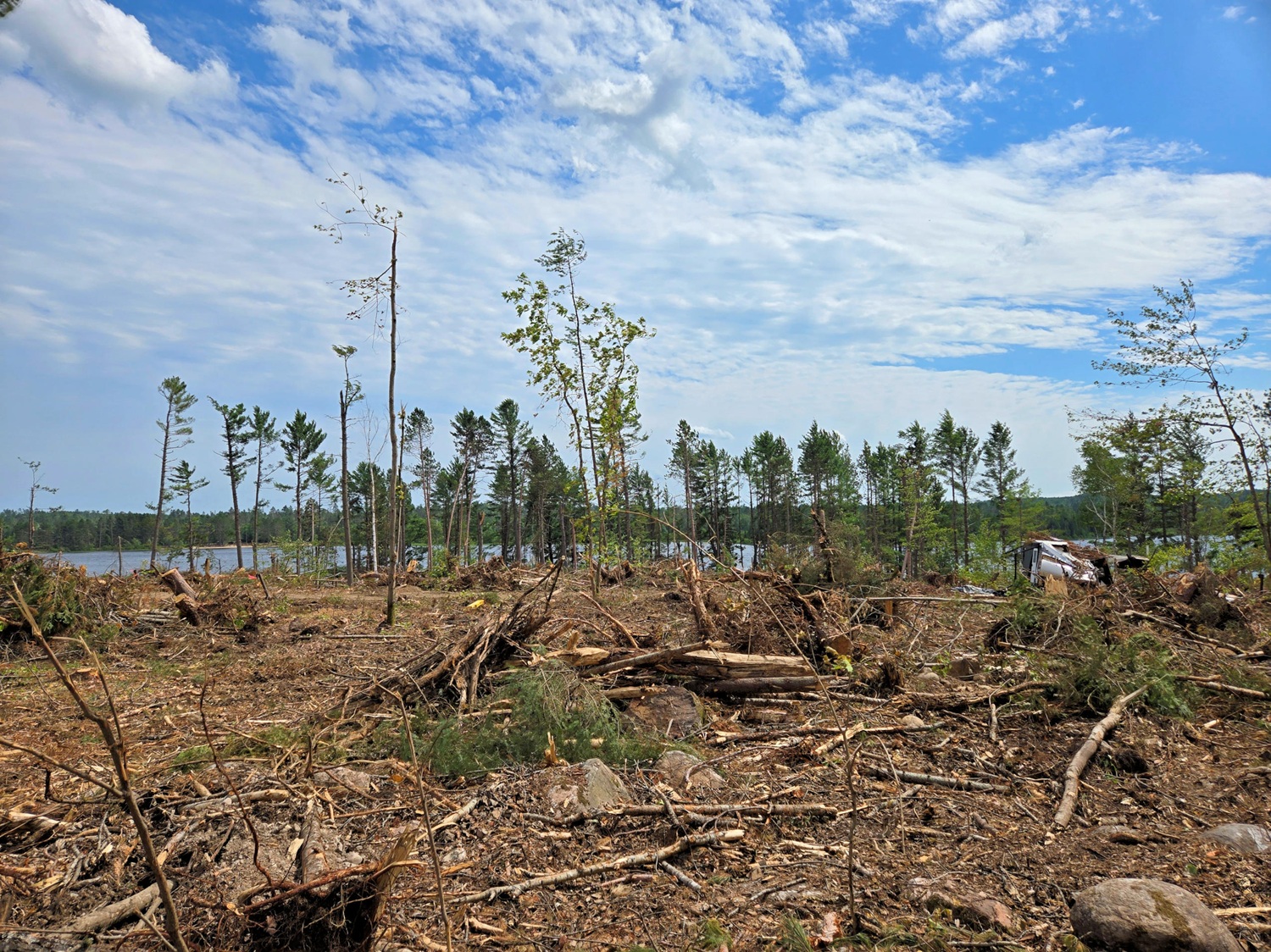
Guess what endangered animal will be mingling with visitors at Quetico Provincial Park this summer. Need a hint?
They wouldn’t say “neigh” to a selfie.
~
A wild time
If you guessed the Ojibwe Horse (also known as the Lac La Croix Pony), give yourself a gold star.
Herds of these wild horses once made Quetico Provincial Park their home. But unlike most wild creatures, the horses are so friendly, you can pet them and feed them.
“These little horses used to live almost on their own in the woods of the boreal forest,” says Quetico Superintendent Trevor Gibb. “When I first heard about them, I thought, ‘No way! How did they survive out there?’ But they’re tough little guys. Apparently, they were living feral – semi-wild – near Lac La Croix First Nation until the ’70s.”
~
Horsecollar Junction
Most people have never heard of this small Indigenous horse, bred as winter transportation by the Anishinaabe.
But Darcy Whitecrow remembers them well.

He was raised in Seine River First Nation, an hour west of Quetico Provincial Park. The reserve once had so many horses, it was known as Horsecollar Junction.
“There’s a direct connection to this horse for all our people in the local area here. There were no roads, so the horse was really valuable.”
~
A working partnership
When the lakes and rivers froze up, people used Ojibwe Horses to haul sleds, move lumber and run trap lines.
“They ran free like the deer,” says Darcy. “Every now and then, when [people] needed them, they just went out and got them.”
It was a fair trade. The Anishinaabe fed and sheltered the horses through the winter, when forage was scarce and predators were hungry. The rest of the year, the horses looked after themselves.
~
A dying breed

But as the North opened up, the internal combustion engine moved in. Motorboats, skidoos, power saws and trucks put the Ojibwe Horse out of a job.
Canada’s only Indigenous-bred horse began to disappear.
By 1977, only four remained. They lived in Lac La Croix First Nation on Quetico’s southeast border.
~
To the rescue!
A careful breeding program slowly rebuilt the Ojibwe Horse population to about 150. Darcy, a former social worker, and his wife, Dr. Kim Campbell, often worked with the small, friendly breed in equine therapy programs.
A few years ago, they decided to take in some horses and launch a program of their own in Darcy’s hometown.

Grey Raven Ranch would reconnect Anishinaabe youth to nature, their history and their culture. And the teens would help save the breed their ancestors developed.
~
Welcome home
“We’re the only ranch that’s brought the horses back to a reserve where they were originally bred,” Kim says. “I think that’s pretty special.”
The people of Seine River First Nation couldn’t agree more.

“When we first brought the horse back to Seine River, we were honoured at the powwow,” says Darcy. “The elders were all sitting in the middle doing a pipe ceremony, giving thanks.
“Some of them hadn’t seen a horse in 50 years. There were tears in their eyes.”
~
A new partnership
Since the non-profit ranch opened, more than 30 reserve youth have trained and cared for the horses. Each teen discovers hidden talents.
“Fred has an eye for sharp stuff that could poke and hurt the horse,” says Kim. “Phil, he’s our hay-packer. He can get more hay into a truck than anyone I ever saw. Serene is our trainer-girl.”
~
It works both ways
 Not every skill develops in the paddock. The teens also pick up business management from running the non-profit and learn about the science of breeding horses.
Not every skill develops in the paddock. The teens also pick up business management from running the non-profit and learn about the science of breeding horses.
Above all, the kids build important life skills, like self-discipline, confidence and patience.
“You think you’re training a horse,” says Darcy, with a grin. “But the horse is actually training you.”
~
The 10-year plan
News of their success is spreading, says Darcy, and that’s raising interest in the preservation of the Ojibwe Horse.
“We just passed a resolution at Treaty 3 level to support the cause of these horses. The five- to ten-year plan is to develop programs in every one of the First Nations so they, too, can give their youth the direct experience of working with horses in their own communities.”
He knows just the team to call on.
“We trained our youth, and our youth can train theirs.”
~
Domestic or import?
 This historic horse breed is also stirring up questions among scientists. Supposedly, the modern horse disappeared from North America 10,000 years ago, and was reintroduced by European explorers.
This historic horse breed is also stirring up questions among scientists. Supposedly, the modern horse disappeared from North America 10,000 years ago, and was reintroduced by European explorers.
Anishinaabe elders disagree. They say the horses were “always here.”
They may be correct, says Kim, a semi-retired Harvard professor. “There’s a lot of research right now about whether the horse really did disappear from North America.”
The breed evolved with special adaptations. A nose flap that keeps out the cold. Small furry ears to discourage pesky blackflies. A genetic marker that does not exist in the Spanish mustang. Then there’s the archaeological evidence – pictographs and bones from centuries before Europeans found their way to North America.
~
Only at Quetico
You can learn all about it at Quetico Provincial Park. Grey Raven Ranch shares the horses and their rich history with the public every summer.

“We have a mandate to provide natural heritage and cultural education about the current and historic features of the park. So it was a natural fit for us,” Trevor says. “And everyone loves horses. We knew it would be a crowd-pleaser.”
It certainly was. “Horses in the Park” remains Quetico’s best-attended education program.
~
Close encounters
“Young people, in particular, are smitten with the horses,” says Trevor. “They love being able to get so close to them. And adults are fascinated by the unique history of the breed.”

The horses stay at Quetico all weekend.
“People come right into the pen. Whole families with their kids – feeding them, petting them, taking pictures with them,” says Darcy. “And the horses, they’re loving it. Over the period of a couple of days, we had more than 150 visitors.”
~
See it for yourself

Come to Quetico Provincial Park for your own close encounter on Labour Day weekend. The horses will meet you in the day-use area of the Dawson Lake Campground.


